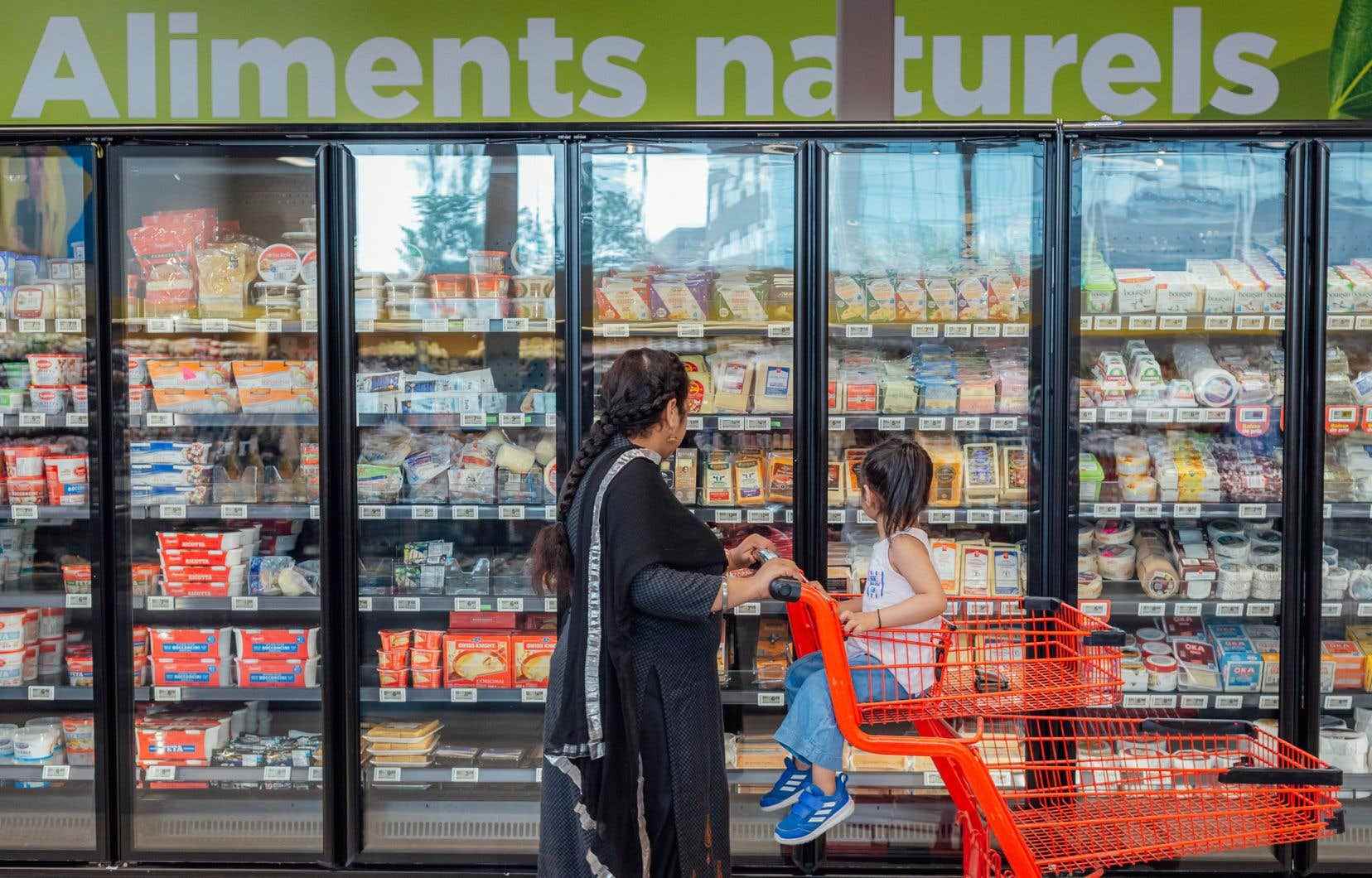Eating well is becoming more and more expensive, especially in Montreal, where a report has noted a significant increase in grocery bills.
On the sidelines of World Food Day, on October 16, the Montreal Diet Dispensary unveiled Wednesday during a live webcast the results of its report on the Nutritious and Economical Food Basket (PPNE). For more than 70 years, the PPNE has been a tool for estimating the minimum cost of a balanced grocery store that meets nutritional recommendations for a typical family of four.
Julie Paquette, Executive Director of the Dispensary, announced during the conference that the data collected revealed a sharp increase in the grocery bill in Montreal between October 2021 and July 2022.
As of October 2021, the annual minimum cost was $11,286.81, or $7.73 per person per day.
Nine months later, the bill was $12,987.35, or $8.90 per person per day, which represents a 15% increase in cost per year. For a family with a pregnant woman, this cost rises to $9.25 per person per day, to take into account the nutritional needs of the mother and her baby during pregnancy.
The nutritious basket is made up of 68 foods divided into 11 categories, such as fruits and vegetables, animal and vegetable proteins, and dairy products. According to the report, the foods that have increased the most over the past year are grain products (37%) and fresh, canned or frozen fruit (41%).
Among the 11 categories listed, 7 experienced an increase of 10% or more during the periods evaluated, the analysis also shows.
Basic ingredients are also affected by this price increase: since October 2021, the cost of pasta has more than doubled and that of flour has almost tripled. The same is true for legumes (17%), white sugar (25%) and margarine (51%), all of which saw significant price increases.
Food insecurity more present than ever
The Montreal Diet Dispensary called this upward trend “worrying” as it becomes increasingly difficult for low-income families to eat healthy foods.
According to the report, it would cost $249.07 per week to feed a typical family, a weekly increase of $32.61 since October 2021.
“And that’s the minimum when you do everything perfectly,” said nutritionist, host and author Geneviève O’Gleman during the webinar. “It involves having a well-equipped kitchen, which is not the case for all families living in poverty. […] This is already a constraint that increases the average price per week. »
François Fournier, researcher at the Quebec Observatory of Inequalities, also pointed out during the conference that the rate of food insecurity in Quebec was accentuated by this soaring price.
“Food insecurity consists of inadequate or uncertain access to food, mainly due to a lack of financial resources. […] In a severe case, we speak of a reduction in the food portion, and outright of skipped meals, ”he explained.
The National Institute of Public Health of Quebec (INSPQ) calculated between March 2020 and March 2022 a 10% to 15% increase in the level of moderate or severe food insecurity in the province. “According to the most recent data from Statistics Canada, more than 13% of Quebecers were food insecure, which represents nearly one million people,” added Mr. Fournier.
Moreover, this insecurity is not distributed randomly across the province: low-income households and single-parent households are particularly affected. Thus, “38% of households made up of single-parent women are in a situation of food insecurity”, underlined the researcher.
Black people, adults aged 60 to 64 living alone and Aboriginal people are also overrepresented in this social issue.
For Julie Paquette, the work of the Montreal Diet Dispensary remains crucial. The executive director announced that the organization would continue its price surveys through Montreal grocery stores, in addition to extending its basket to a wider population.
“We are working on a basket that corresponds to the eating habits of one or certain indigenous communities,” she said.
Thanks to funding recently obtained, the organization will also have access to food data from the Magdalen Islands, the North Shore, as well as Mauricie and Centre-du-Québec for the next year, in order to compare them with the Montreal data.
—
This article was produced with the financial support of the Meta Fellowships and The Canadian Press for News.
